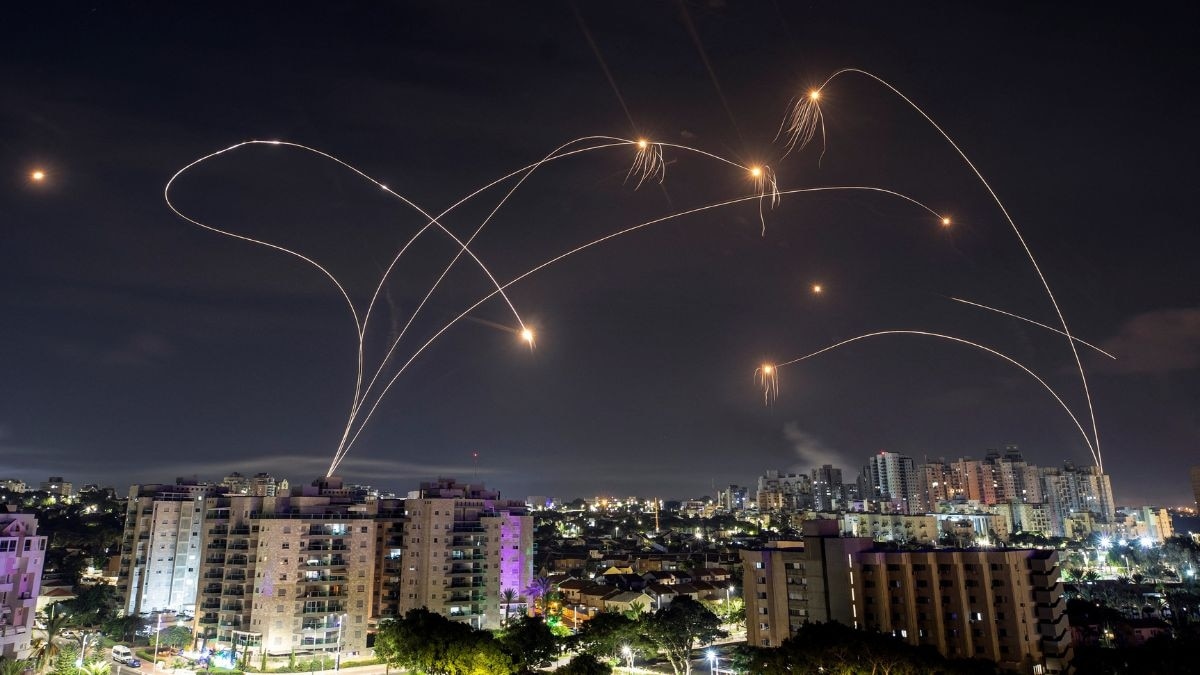Israel’s popular Iron Dome defense system found itself overwhelmed by a barrage of rockets from Hamas during the recent attack. This marks a significant setback for a defense system that had previously boasted a high success rate in intercepting incoming missiles. The sophisticated system managed to intercept many missiles fired by Hamas. However, some of the missiles bypassed the system leading to multiple casualties in Israel. The attack revealed the vulnerabilities in the state-of-the-art defense system. But how and why was the it compromised?
How did it all start?
Hamas, a Palestinian militant organization, launched an unprecedented attack, firing over 5,000 rockets at Israel from the Gaza Strip in a span of just 20 minutes. This massive salvo of rockets turned out to be a challenge for the Iron Dome, making it difficult for the system to intercept all incoming threats. During previous conflicts, the Iron Dome had demonstrated its capability, with Israel claiming an 85% interception rate in 2012 and a 90% success rate in 2014 when faced with thousands of rockets fired from Gaza.
Additionally, over the years, Hamas improved its rocket technology, extending the range of its projectiles to cover major Israeli cities, including Tel Aviv and Jerusalem. This evolution in rocket capabilities has put added pressure on Israel’s defense systems.
The cost-benefit analysis
The Iron Dome has proven its effectiveness in neutralizing threats but it faces a financial challenge. Each Tamir missile fired to intercept a Hamas rocket is significantly more expensive than the rockets themselves, making the cost analysis complex for Israel.
Over the years, Israel has expanded its coverage, enhanced threat interception capabilities, and adapted to handle high-volume salvos. But the mettle of the defence system was tested when it faced 3,000 projectiles (5,000 projectiles according to Hamas) in a very short span. The sheer volume of rockets managed to bypass the defense system, hitting Israeli territory and causing damage.
The history of Iron Dome
The Iron Dome’s development began in December 2007, aiming to counter short range threats, rockets, artillery, mortar, aircraft, UAVs, and more. The need of an effective air defense system became evident after the 2006 Israeli-Lebanon war. It was declared operational in 2011 and has since played a crucial role in safeguarding Israeli cities. The Iron Dome has evolved over the years to adapt to changing threats, including attempts to increase its interception range and versatility. It has received significant financial support from the United States.
Multiple versions of Iron Dome
The Iron Dome has also adapted according to different requirements and terrains. The I-DOME is an all-in-one mobile version. This system is mounted on a single truck, providing protection for motorized or mechanized troop, as well as point air defense for military, industrial and administrative installations. Another system called C-DOME is the naval version. The same technology is applyied to counter naval threats and to protect ships and other sea-based assets of Israel.
Also read: Kerala nurse injured in Hamas attack during video call with husband
Also read: Israel-Hamas war: German woman Shani Louk paraded naked by Hamas fighters was robbed, credit card stolen, says report

